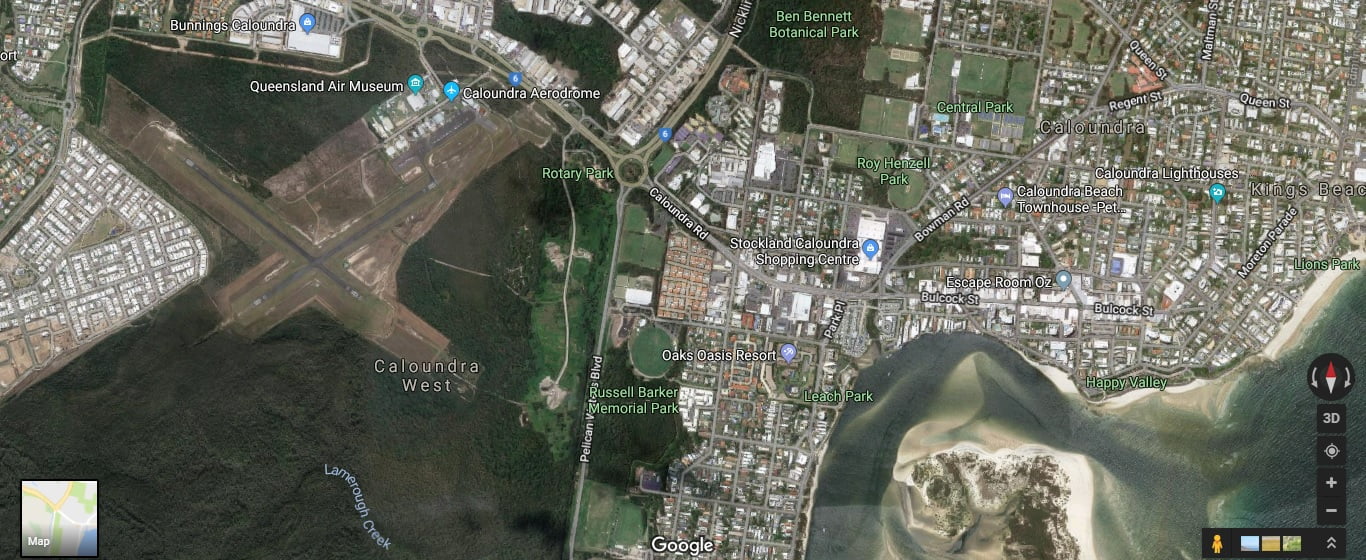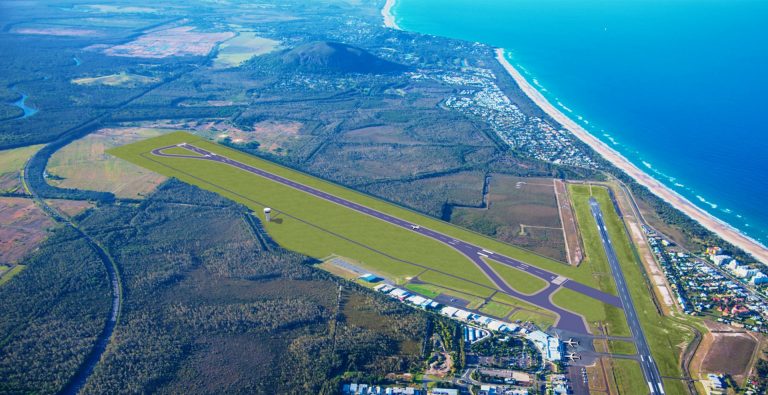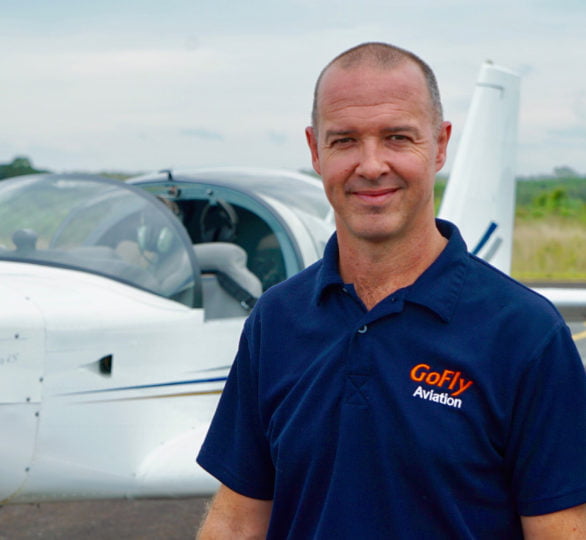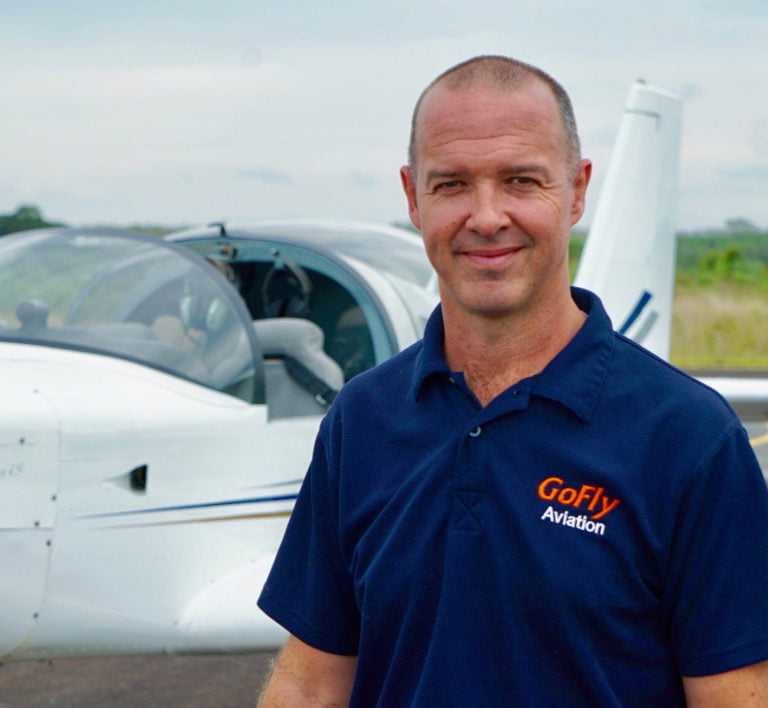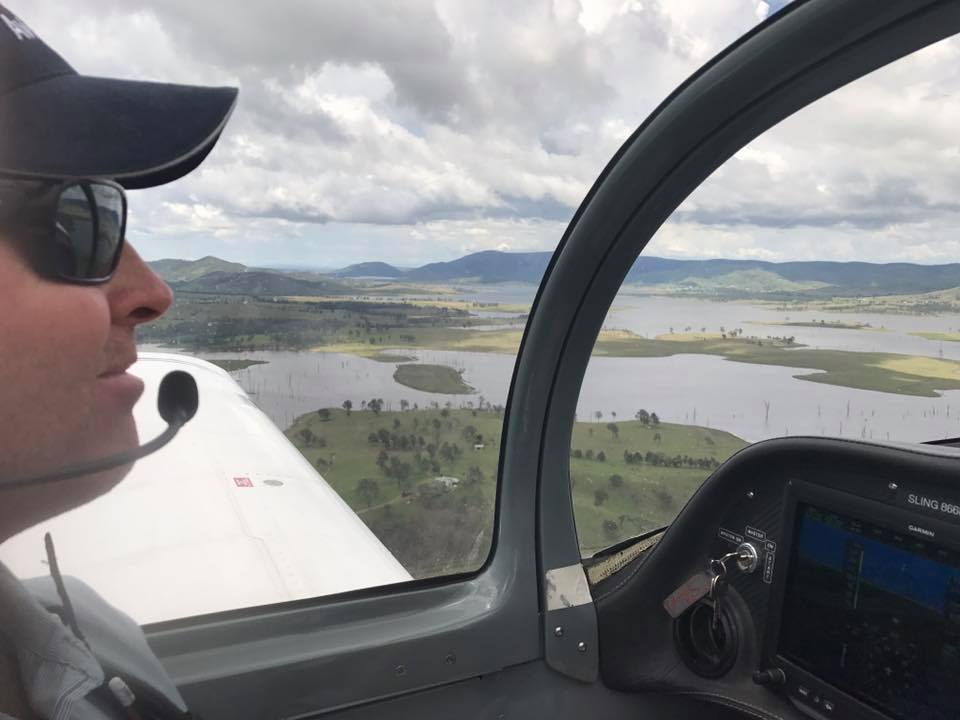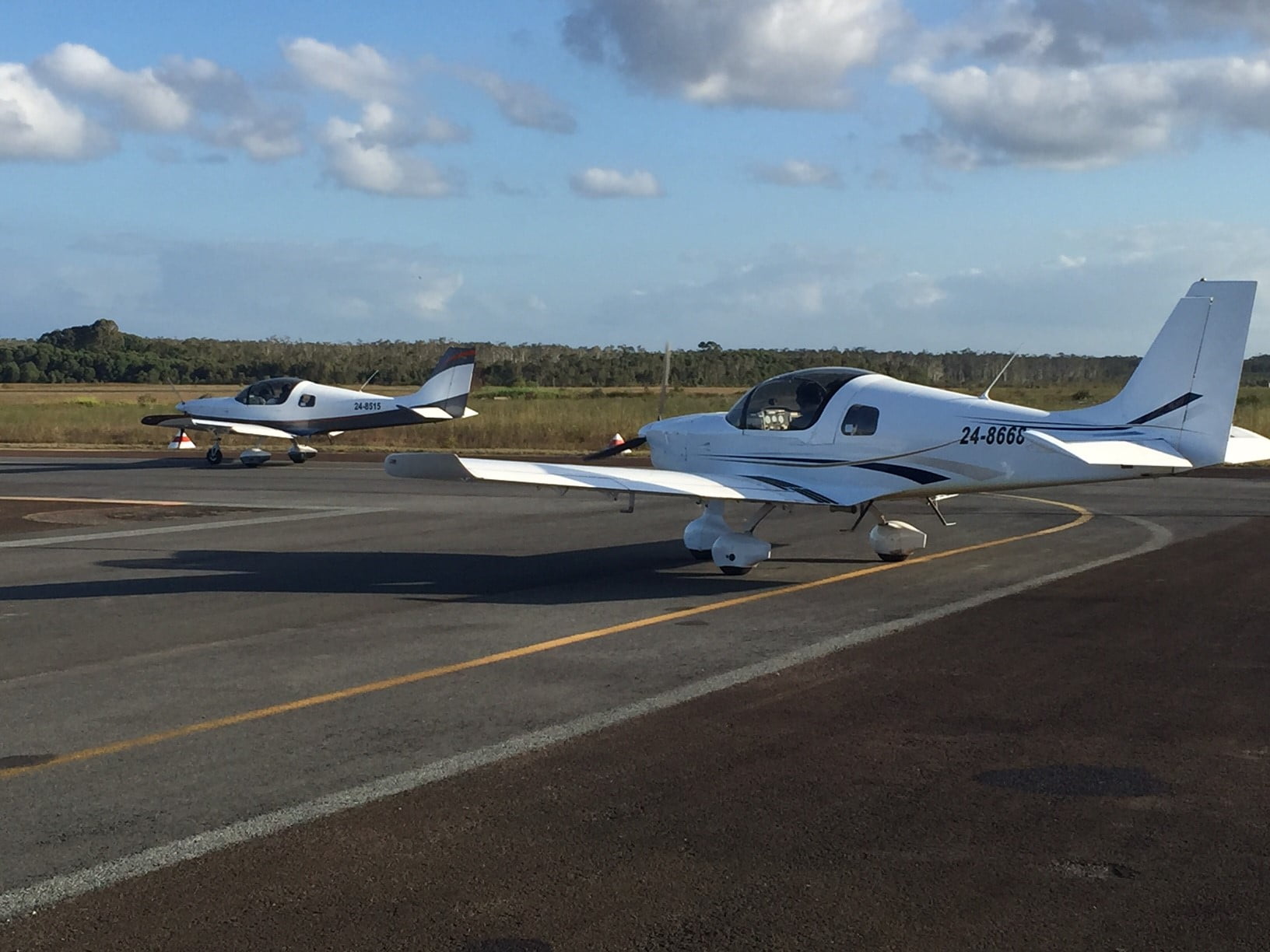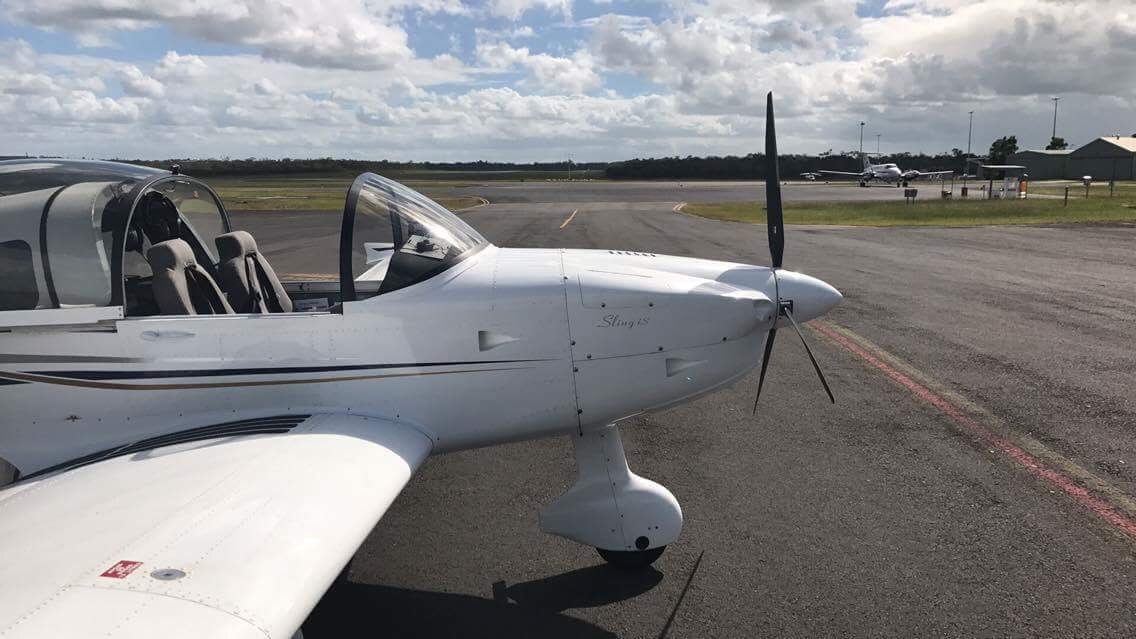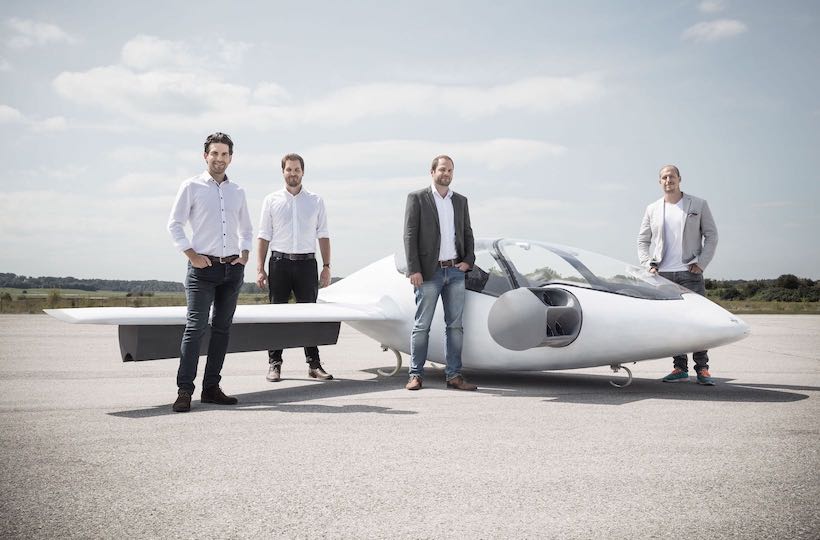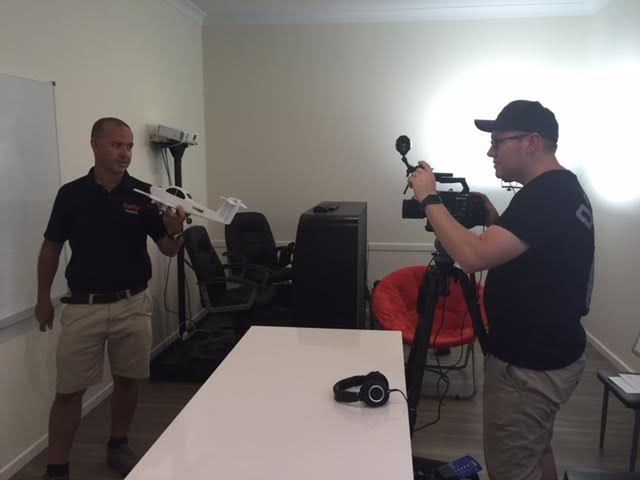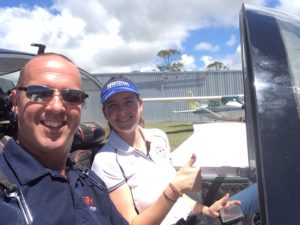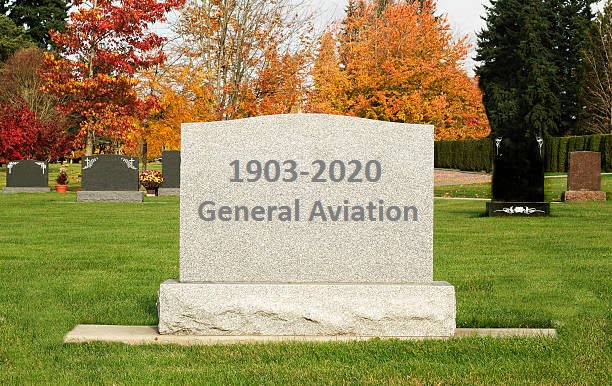
General Aviation is dying and
here are 10 radical ideas for saving it!

General Aviation is dying a slow death. This is not just confined to Australia, this is a worldwide phenomenon. The reasons are many and varied. Some of the main reasons GA is dying in Australia are (but are not limited to) the following:
- A lack of interest from young individuals in wanting to learn to fly
- Overly complex loan structures for trainee pilots
- A training syllabus that was created over 50 years ago
- Rising costs in regulation, maintenance and aircraft manufacturing
- Slowness to adopt and incorporate modern technology
- A lack of entrepreneurial spirit to drive General Aviation into a new and vibrant future
- A lack of a clear vision on how the future should look
- Over-regulation and a slowness to adapt, in our governing body, the Civil Aviation Safety Authority (CASA)
- A lack of a commercial imperative within CASA
I do not presume to have all the answers, I am writing this post not to pick fault with the current system but in the hope of sparking a debate on how we can imagine a better future for General Aviation. What is lacking is a vision of the future which can replace rules and regulations which were designed over sixty years ago.
We are starting to see some exciting technology on the very near horizon and if General Aviation does not adapt to these changes then General Aviation will die. There is not just one entity to blame for this: CASA, Flight Schools, Charter Operators, aircraft manufacturers and our current legal structures are all to blame. For example, the electric on-demand Air Taxi industry is predicted to be the next high-growth industry. There are currently over 200 new company startups working to develop on-demand Vertical Take-Off and Landing (VTOL) electric aircraft. If General Aviation does not act fast, it will be left in the dust.
The Aircraft Owners and Pilots Association (AOPA) has just released a report confirming that General Aviation has declined by 18 percent over the last five years. Recreational Aviation has increased by 0.2 percent in the same time period. This is hardly surprising given the cost and bureaucratic differences between RAA and CASA, and the differences between aircraft age, type and technology. Ease of access and training is another benefit that Recreational Aviation offers over General Aviation training. For example, a person can walk into a Flight School, sign a RAA temporary membership form and be learning to fly 15 minutes later.
CASA is finally trying to address a lot of these issues, however without a clear vision of what the future will look like, CASA will only be plugging the water leak in the sinking ship, when it should be creating a new and better ship. The world is changing so fast, that if Government agencies cannot change, innovate and adapt quickly, they will self-destruct and destroy the very industries that they are governing and supposedly protecting.
I am an eternal optimist and I believe that with enough public debate and enough passionate individuals, we can turn things around for General Aviation.
Here are my ten ideas to help stimulate a debate about what’s possible for the future of General Aviation.
1.CASA should simplify its business model and adopt a commercial imperative
You don’t have to be genius to realise that the structure of CASA is overly complex and is stuck in a post-World War II government bureaucratic mindset. This isn’t really anyone’s fault; it is more a limitation of this type of public service government structure.
NASA used to be a classic example of this mindset. NASA has finally seen the light and have finally contracted (outsourced) to private companies like SpaceX to supply most of their rocket requirements. They realised that private industry is where innovation thrives, not in government agencies.
I’m not suggesting that CASA should privatise – though it’s worth considering – but it might not be such a bad idea to outsource many of its functions to companies which understand, and have a vision for, the future of General Aviation
The issue with government agencies is that they often sit above the sinking ship below them. They don’t realise that the sinking ship (private industry) is actually their supply ship, and if it goes down, they go down with it too. When you work for an agency which receives income from taxpayers – regardless of the state of General Aviation – it’s hard to have a ‘this needs to be changed now mentality.
All you have to do is log onto the CASA website to see how complex this agency is. This complexity is a byproduct of it being a government agency. I remember ringing CASA once to ask them the minimum hours required for a Commercial Helicopter Pilot to convert to being a Commercial Fixed Wing pilot. The wording in Part 61 was confusing, so I rang the licensing division. In the space of three weeks I had to call them three times, and I spoke to three different staff members and received three different answers. The licensing staff themselves admitted the wording was confusing.
Exams are another issue that needs to be addressed. At present a student can only sit the exams in an approved exam centre, and it can cost between $100 to $250 to sit an exam (depending on where you are doing it). I believe a simpler model would be to allow all flight schools to have access to the online exams and all responsibility should fall on the CFI to make sure the exams are completed honestly. Regular flight school audits would ensure everyone is doing the exams honestly and fairly.
The other issue is that, unlike the Federal Aviation Administration (FAA) in the states, CASA does not have a commercial imperative to grow and promote General Aviation; its main purpose is to regulate it (to maintain safety). While there is no doubt that we require regulation to minimise risk in aviation, I do not see the point in having an organisation regulate an industry without also promoting the future of that industry, because without that industry the regulator would not exist.
In a recent interview, Former Chairman of CASA, Bruce Byron, backed key changes to the Civil Aviation Act being pushed by businessman Dick Smith, who has complained about a rise in needless red tape. The article says, ‘Mr Smith, a former CASA chairman, last month secured approval from Barnaby Joyce and Anthony Albanese for a rewrite of the Act, but the prospect of a bipartisan deal died with Mr Joyce’s resignation from cabinet on February 23. Mr Joyce, then the Coalition transport minister, had agreed with Mr Albanese, his Labor counterpart, about removing a key part of the act that requires CASA to ‘regard safety as the most important consideration’ in regulating the industry. Under the changes, CASA would instead be required to prioritise the ‘highest level of safety in air navigation’ with the need for ‘an efficient and sustainable Australian aviation industry’. We can only hope that this push for the rewrite of the Act, continues, despite changes in personnel within CASA and parliament.
Government agencies are notoriously slow to change and adapt, an example of this is the proposed controlled Airspace endorsement for Recreational Pilots. This proposal has been sitting with CASA now for at least seven years. The irony is that Glider pilots can do a controlled airspace endorsement, and gliders have been legally flying into controlled airspace for years. I understand that the new endorsement needs to be implemented correctly, but seven years is ridiculous. I’m convinced that private industry could have implemented a project to safely roll this out within six months.
My suggestion for CASA would be to outsource the task of creating Survey and Innovation teams. The Survey teams could survey the stakeholders of the General Aviation industry, to collect positive and negative critical feedback on what needs to change within the industry, then the Innovation teams can oversee the implementation of any required changes.
2. Recreational Aircraft should be allowed to be ‘VH’ registered and used for both General Aviation and Recreational pilot training
With some light sport aircraft, if the plane is ‘VH’ registered, it can be used for GA training and even night training. However this same aircraft cannot be used for Recreational training unless it is ‘24’ registered (that is, registered through Recreational Aviation Australia).
At some schools that do both GA and RAA training, they have two of the same aircraft, one registered 24 (with RAA) for recreational pilot training and one registered VH (GA) for general aviation training. They are the exact same aircraft but registered with two different organisations!
My argument is that if a flight school wanted to best utilise an aircraft for both PPL, night and RAA training, the ability to use it should not be determined by how it is registered. This just adds complexity once again when it is not required.
I own a flight school which currently does both RAA and GA training in conjunction with another school, and currently leases aircraft owned by others. It would be fantastic if I could VH register our Sling aircraft and use it for PPL, controlled and night training for GA students (with a GA instructor) and then also use it for Recreational Pilot training through RAA. This would allow the light sport aircraft to be fully utilised and improve the aircraft owner’s return on their investment. It would also make it easy for students to transition from RAA to a PPL or even CPL licence.
3. CPL training should be allowed to be conducted in Light Sport Aircraft or General Aviation Aircraft without a design feature difference
Currently in Australia, a commercial fixed-wing student completing a non-integrated flying course can fly the majority of their training hours in a Recreational aircraft. However, to obtain their Commercial Pilot’s Licence (CPL), they need to sit and pass all their CPL theory exams, as well as pass a Class One medical and sit a flight test in a certified aircraft which can do at least 120 kts and has at least one design feature (e.g retractable undercarriage or constant speed propellor). This usually means you have to sit the flight test in an ageing Cessna 182 or 172 RG.
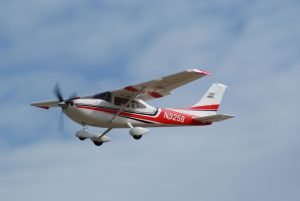
The issue here is that there is now a plethora of new light sport or EaSA CS-VLA aircraft which are modern and sexy and cost the same as an ageing Cessna, and about half the cost of a new certified single engine aircraft. The Blackshape Prime is a classic example of the new breed of light sport aircraft. This aircraft can cruise at 150kts, has a retractable undercarriage, constant speed, glass cockpit, a BRS chute and costs around $250,000 new (a new Cessna 182 is around $700,000). The operating costs are about one third of the costs of a Cessna 172 RG. And did I also mention that it is sexy?
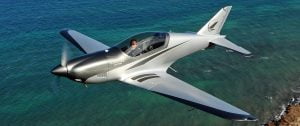
I know some instructors have argued that you should do your CPL training in a similar aircraft to what you will be flying for your first job, however this argument is becoming redundant as most jobs for new pilots are now going to be either direct entry airline or Instructing jobs.
The Blackshape Prime would be an ideal aircraft for night and CPL training but under the current regulations it cannot be used for the CPL flight tests even it is VH registered, as it is not a ‘fully certified’ aircraft. There are plenty of new Light Sport or ESA VL aircraft under $200,000 which could be used for CPL training. This would make it affordable for flight schools to replace their ageing fleets and at the same time attract new students with these new and exciting aircraft.
4. Airlines should do away with the Twin Engine Instrument rating requirement (single only)
Back in the dark ages when I was a Charter Pilot in the Northern Territory, young pilots would fight each other to get multi-engine instrument time as the airlines required at least 500 hours of multi-engine instrument time before they would even look at employing you. The major airlines have now reduced this requirement, however I propose that they get of this requirement altogether. The reason is simple: handling a multi-engine jet or turbine aircraft is fundamentally different than handling a piston twin. The first difference is of course that if a turbine twin aircraft or jet has an engine failure there is a very good chance you will keep flying.
The other reason is that the airline will do an aircraft Type Endorsement on the jet aircraft you will be flying anyway, and you will be spending a considerable amount of time as a co-pilot before they let you loose as a Captain. During this time you will have to demonstrate your proficiency in handling engine out procedures in the simulator. Most of the twin-engine Charter Pilots I knew never had an engine failure, so more time on a twin – other than going faster – had no bearing on their ability to fly a twin-engine jet in the future.
I believe a more common sense approach would be to only require a single-engine instrument rating (as well as your CPL) as a requirement for airline entry. This would make it easier for Flight Schools as they wouldn’t have to own and house an ageing twin-engine aircraft just to satisfy this requirement.
A Flight School could potentially use an aircraft like a Cirrus SR20 for PPL, CPL and instrument training, and this better utilisation would increase return on investment for the school. Plus statistically, twin-engine training in light piston twins is a higher risk scenario than single-engine operations, due to increased complexity and controllability issues during asymmetric operations for twin-engine aircraft.
The other key benefit would be the reduced cost of flight training and of obtaining your CPL/instrument rating, which would be a huge benefit for everyone, including the airlines.
5. CASA needs to implement the FAA new Part 23 and make it seamless for new business startups to design new aircraft
The FAA has recently implemented a new Part 23 for the certification of light aircraft. Basically the new Part makes it easier and less costly for new aircraft manufacturers to design and manufacture new aircraft. Prior to this, designing and certifying a brand new light aircraft was prohibitively expensive. For instance, the cost to design and certify a new piston 4-seater aircraft in the USA was around $20 million. With the new Part 23 rules this cost drops to around $2-4m. This makes it a lot more attractive for investors to invest in new startups designing and building new types of aircraft . It also means the manufacturer does not have to recoup the huge costs of certification from the initial investment. This hopefully will lead to more modern cost-effective aircraft.
I would recommend CASA implements a Part 23 Team to foster new light aircraft design and production in Australia by following the new Part 23 rules which have been introduced in the USA. We have so many talented aerospace professions in Australia, and this new rule could be a huge boost for the Australian manufacturing sector (and economy), particularly if you consider our dollar exchange rate compared to other countries.
Designing and manufacturing aircraft and exporting them to the USA, China and Europe makes a lot of sense and it would invigorate our own General Aviation industry (and the economy) while at the same time allowing home grown products to be purchased by local flight schools, charter companies and private individuals.
6. The government needs to implement tax incentives for flight schools and aircraft manufacturers
Why not also make it easier for flight schools and charter companies to get started and keep doing business? Tax incentives for investors, as well as a grace period or reduced tax for new startups could be a good way to stimulate business growth in these areas. The other obvious solution would be to do away with the huge processing fees (and timeframes) required in obtaining an AOC for either a flight school or charter operation.
CASA could implement generic templates which could be used for all new startups, while a simple processing fee would be all that is required for your new venture to be approved – providing it follows the guidelines.
7. Change the flight training syllabus for greater use of flight simulation and alternative technologies
Our current flight training syllabus originated during World War II. While much of the syllabus makes sense and has served the General Aviation industry well for many years, I believe we need to take a close look at what is working and what is not working in relation to new technologies. A good example of a change that makes sense was the introduction of the MPL course which offers integrated training for would-be airline pilots and offers multi-crew training all the way through their course (with a high focus on jet simulator training and a reduction in flying real small aircraft).
An idea that was first proposed was that airline students could complete all of their training, from ab initio to being job-ready, on a simulator and never had to conduct any training in a real light aircraft. The reasoning is that flight simulators are so advanced the student does not know the difference, plus the student will be sitting in the right-hand seat under supervision for at least five years once they are flying real aircraft. Most industry professionals did not accept this innovative idea, but they do accept that simulators play a very important role in flight training.
While I believe in and see the benefits of training in real aircraft, I also feel that with the advancement in computer technology (including virtual technology) we could allow flight schools the ability to lower the hourly requirements if they could introduce low-cost realistic flight simulation to supplement training in planes. An example might be to reduce a 200-hour non-integrated CPL course down to 150 hours, providing 50 hours are conducted in an advanced low-cost simulator.
Everyone knows the benefits of simulator training for use in practicing emergency procedures that are too risky to practice in real aircraft, so why are they reluctant to adopt this technology in the smaller flight schools? Lowering the hourly requirements and relaxing the simulator requirements would encourage more Flight Schools to invest in this technology. Plus it would attract more young students. At my own Flight School I’ve created an Online Flight School, which consists of standard and 360-degree videos of pre-flight and in-flight lessons which can be watched by any student at any time and on any device. These videos supplememt the in-air lessons and make the whole learning experience more interesting than an Instructor standing at a whiteboard.
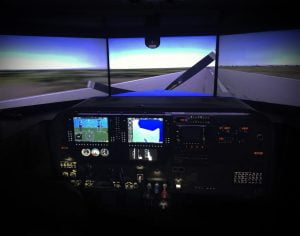
8. The Government needs to introduce a new streamlined VET process for all flying schools
The current diploma HECS or VET Fee program for flight schools, while working successfully in some respects, could be dramatically improved. The scale of the VET Fee program has recently been reduced, due to many schools abusing the program. The other issue is that many VET providers have to wait up to three months to be paid by the government once an invoice has been submitted. Flight Schools are weather-dependent and cash-flow dependent businesses with high overheads (see my recent blog on this subject). Many schools which spent months jumping through hurdles and adapting their syllabus in order to be eligible to receive VET fees, have now had to close down altogether due to not being able to manage cash-flow during the three-month period between invoicing for and finally receiving the large VET fee payments!
I believe the government needs to make VET fee available for all flight schools, including Recreational Flight Schools (up to stage 02), and ensure all invoice payments are made within 14 days of submission to the VET fee government department.
If anyone asked me, my suggestion would be to introduce a three-step program for VET fee help for schools. The VET Fee would be consist of three stages:
First Stage – PPL and CPL Theory course. This fee help would be around $6,000 and allow students to enrol in a full-time theory course to CPL level. If the student does not pass their theory tests then they cannot progress to the next VET fee stage. This ensures that only seriously committed students get access to the next stage of funding, and the worse case scenario for the student is that they are $6,000 in debt.
Second Stage – RAA or PPL licence. This VET fee amount would be up to $20,000 and allow the student to conduct their RAA, RPL or PPL licence – or an integration of both. The student would not be allowed to progress to the next stage unless they pass this stage of their training. They can choose whichever school they prefer.
Third stage – Command time and CPL/Instrument training up to $50,000 at any approved CPL school. This staged progression would reduce the risk of students getting VET fee funding for the entire course only to realise towards the end of the course that they are not CPL material, and now they have a huge debt with nothing to show for it. This could be a great way to encourage young students to consider an airline career.
9. Airlines should hire new CPL pilots directly from flight schools
Airlines have forecast a serious pilot shortage in the future and are already putting in place programs for cadetships, quotas for more females and are even setting up regional training bases.
I think it is crazy that airlines can run their own cadet program and allow their cadet students to go directly into the right-hand seat of an airliner with minimum experience, whereas for those who have paid for their own training, they require them to build 500 to 2,000 hours of flying experience before the airlines will consider hiring them.
Here is a radical idea to fix the future pilot shortage: reduce the minimum hours required for entry into airlines to 200 hours with only an instrument rating and CPL licence for everyone. The airlines could do extra simulator training to bring these low-hour pilots up to speed on that particular aircraft type. The ATPL theory subjects could be studied part-time and completed before the new hire is promoted to Captaincy. The reality is that a new airline hire is going to spend three to eight years in the right-hand seat under supervision of the Captain. That’s around 2,000 to 4,000 hours of flying experience before they are ready for a command position.
If young students knew that they could go directly from a flying school into an airline job, I can guarantee there would be no longer be a future shortage of pilots, as the career path would be a lot more attractive than spending years out in regional Australian towns trying to build hours on an ageing light aircraft, or being paid a minimum wage as an instructor.
10. Encourage mature individuals to learn to fly and become career instructors
The other major issue affecting General Aviation is the poaching of qualified instructors by the airlines – to the point where there is a serious lack of qualified experienced instructors. This is only going to get worse with the current pilot shortage. One of the current problems is that the younger instructors will work for a low hourly rate just to build their hours before heading off to the airlines (see my point above!). While this may benefit the Flight Schools in the short term, in the long term, the entire industry suffers.
I believe that one way of avoiding this is to try to attract the middle-aged individual who has left it too late to join an airline but would make an excellent career instructor. I know plenty of individuals who are in their late 40s who would happily give up their soul-destroying office or construction job to be a full-time or part-time flight instructor if there was a clearer pathway and the income was adequate.
Private industry needs to work together to improve the pay conditions and advertise the lifestyle benefits of changing careers to become an instructor. My experience is that a properly run flight school in a good location can comfortably pay its full-time instructors anywhere between $50,000 – $65,000 per year. I’m sure there are plenty of mature potential instructors who would love to fly planes every day for $60,000 per year.
Time for change
In fairness, CASA has a challenging job and they have been trying to innovate many of their processes for a while. The recent changes to the medical requirements for PPL holders is a good example and a step in the right direction.
Within 10 years we will have low-cost electric aircraft and electric vertical take off and landing aircraft readily available (see my blog on this subject). If General Aviation does not adapt with the times it will be replaced by something new and foreign to many of us. Self-flying air taxis are a real possibility, but who will manage the infrastructure and safety aspects of these new industries when we cannot get the current framework right?
We require inspiration and entrepreneurial leaders in private industry and in government to initiate change today, not tomorrow. If you have a vision for a better future for General Aviation don’t sit on the fence and hope things will improve, make a noise, join a board, or at the very least, comment on this blog.
The future of General Aviation is in your hands!
Damien
CEO, GoFly Group
Click on this link to read further blogs by Damien.

